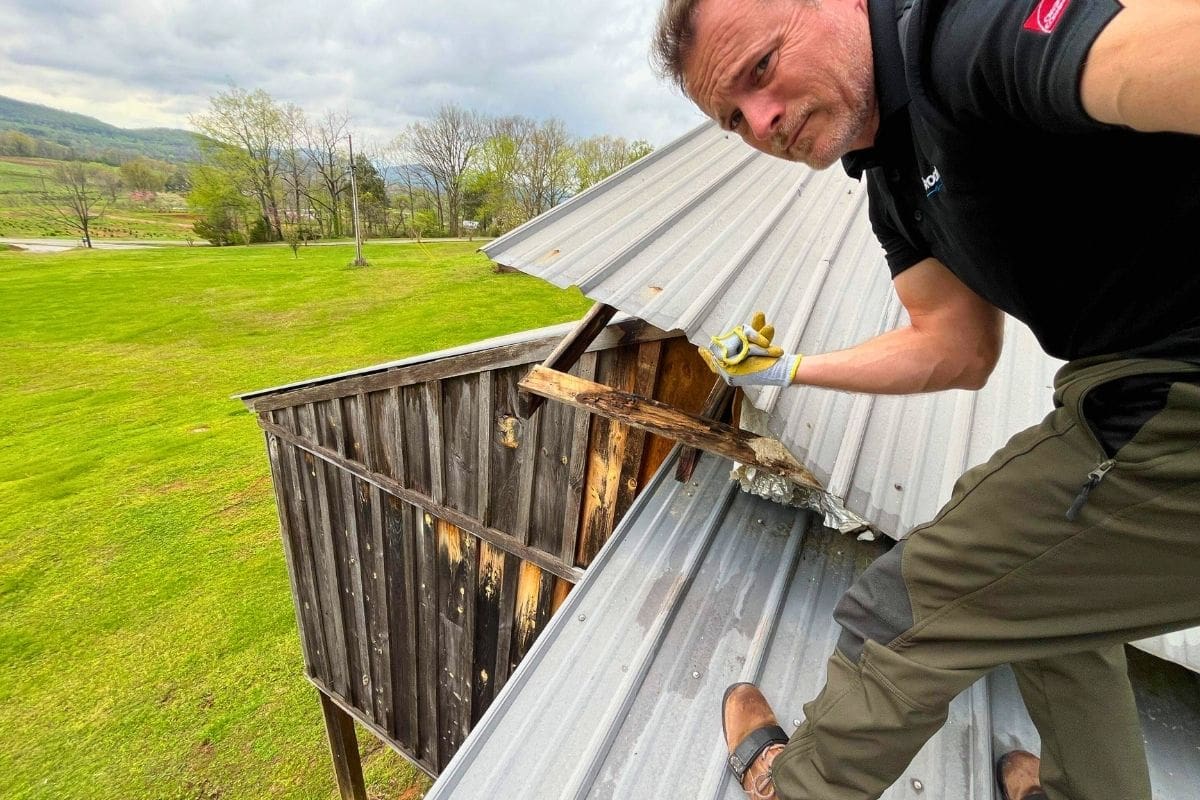5 Business Shortcuts of a Bad Roofer
A suspiciously low roofing bid often hides more than just cheap shingles; it can signal a roofer who cuts corners on their entire business operation. To make a profit on an impossibly cheap price, these contractors often skip the essential costs of running a legitimate, professional company.
This final batch of shortcuts addresses these errors related to the contractor’s professionalism and business operations. These issues, from working without insurance to skipping permits and neglecting job site safety, are not about the physical roofing work itself but are critical for ensuring a safe, legal, and satisfactory project outcome for the homeowner.
1. Hiring Unlicensed and Uninsured Workers

Problem: A contractor operating without a state license and proper insurance does so to avoid the significant costs of legitimate business, including license fees and high insurance premiums. This shortcut indicates they may lack the proven knowledge required for licensing and are deliberately operating outside the law. They typically lack both General Liability insurance for property damage and, crucially, Worker’s Compensation for employee injuries.
Impact: The homeowner unknowingly assumes massive financial risk. If a worker is injured, you could be held personally liable for their medical bills and lost wages in a lawsuit. If the roofer damages your property, you have little practical recourse for compensation. Furthermore, without accountability to a state licensing board, there is no governing body to appeal to for resolving disputes related to poor workmanship or project abandonment.
Proper Procedure: Before signing a contract, you must verify the contractor’s credentials. Ask for their state license number and look it up on the official contractor state licensing board website to confirm it is active and in good standing. Request a certificate of insurance for both General Liability and Worker’s Compensation. Confirm the policy numbers and effective dates are current and that the coverage amounts are adequate for your project.
2. Providing a Limited or Non-Existent Warranty

Problem: An unscrupulous roofer may mislead you by promoting the lengthy manufacturer’s warranty on materials while offering a weak or non-existent warranty on their own labor. Most roof failures stem from installation errors, not defective shingles. A bad contractor’s workmanship warranty is often intentionally vague, extremely short (e.g., one year), or purely verbal, making it unenforceable when problems arise.
Impact: When a leak appears due to improper installation—such as poorly installed flashing or incorrect nailing—you are left with no protection. The contractor will be unreachable or will deny responsibility, and the material manufacturer will not cover the damage because their warranty was voided by the faulty installation. This leaves you responsible for paying for expensive interior and exterior repairs, as well as the cost of hiring a new roofer to fix the original mistakes.
Proper Procedure: Demand a clear, detailed, written workmanship warranty separate from the manufacturer’s material warranty. This document should explicitly state what is covered (labor and installation), the duration (a reputable roofer offers five years or more), the exclusions, and the exact process for filing a claim. Review this document carefully before signing the project contract to ensure you are adequately protected.
3. Performing Work Without a Necessary Permit

Problem: A building permit is a legal requirement for most roof replacements in Tennessee. Its purpose is to ensure the job meets current safety and building code standards through official oversight. A bad roofer skips this step to save time and money, but more importantly, to avoid the mandatory inspections that would expose their subpar methods, incorrect materials, or unsafe practices.
Impact: The homeowner can face serious consequences, including “stop work” orders from the city that leave the house exposed, as well as fines for non-compliance. A lack of a permit creates a major red flag when you decide to sell your home, potentially devaluing your property or causing the sale to fall through. In a worst-case scenario, your homeowner’s insurance carrier could deny a future claim for roof damage, arguing that the unpermitted work was not up to code.
Proper Procedure: The contract should state that the roofing contractor is responsible for obtaining all necessary permits. Before work begins, confirm with your local building department that the permit has been officially pulled for your address. Ensure that the contractor schedules all required inspections (often a mid-roof and a final inspection) with the city inspector, and do not issue final payment until the project has passed its final inspection.
4. Failing to Protect the Homeowner’s Property

Problem: A roof replacement is a heavy-duty construction project that can easily cause significant collateral damage if precautions are not taken. A corner-cutting roofer will ignore property protection to save on the labor and equipment costs associated with it. This lack of a protection plan shows a fundamental disregard for the client’s home, treating potential damage as an acceptable risk that the homeowner will have to deal with.
Impact: Falling debris, tools, and foot traffic can dent siding, break windows, crush landscaping, and damage decks, driveways, and HVAC units. The cost to repair this collateral damage—from a single broken window to a damaged air conditioner—can easily eliminate any savings realized from the low bid. The homeowner is then left with the stress and expense of fixing problems that should have been prevented in the first place.
Proper Procedure: A professional roofer will present a detailed property protection plan. Ensure the contract specifies the use of tarps or netting to cover landscaping and siding (“catch-all” systems are best). It should also detail the use of plywood shields to protect vulnerable areas like windows, doors, and A/C units. Before work starts, walk the property with the project manager to document pre-existing conditions and confirm all protective measures are in place.
5. Incomplete Job Site Cleanup

Problem: A thorough cleanup is a non-negotiable final step of a professional roofing job, not an optional extra. A bad roofer, however, will do a quick, superficial cleanup and leave, considering the job done once the last shingle is nailed down. They neglect the laborious task of meticulously clearing all project-related debris, especially the thousands of sharp roofing nails that inevitably scatter across the property during the tear-off process.
Impact: The most immediate danger is from leftover nails, which can puncture vehicle tires and cause serious injury to children and pets playing in the yard. The remaining debris, from shingle fragments to packaging, creates an eyesore and leaves the homeowner with a final project of their own: finishing the cleanup. This is not only an inconvenience but also a transfer of the final labor costs from the contractor to the client.
Proper Procedure: Your contract must include a clause detailing the cleanup process. This should specify the removal of all project debris from the property in a dumpster or truck at the end of the job. Most importantly, it must mandate a final, meticulous sweep of the entire grounds—including the lawn, driveway, patios, and flowerbeds—with a high-powered magnetic roller to collect any stray nails. Withhold final payment until you have inspected the property and are satisfied with the cleanup.
Professionalism Isn’t a Shortcut
As this list demonstrates, the difference between a professional roofer and a “bad” one extends far beyond the roof itself. These business and job site shortcuts—from failing to pull a permit to leaving a yard full of nails—reveal a fundamental lack of respect for the client, the law, and basic safety. The money saved on a cheap bid is a direct transfer of risk to the homeowner, who is left liable for injuries and responsible for the mess.
Before you sign a contract, vet the company’s professionalism as much as their price. A contractor who proudly shares their license, insurance, and a detailed plan for property protection and cleanup is investing in your safety and satisfaction—a value that far outweighs a deceptively low bid.

